Abstract
Twenty eyes of 10 healthy subjects, 11 eyes of seven patients with low tension glaucoma, and three eyes of three patients with ischaemic optic neuropathy were investigated. Visual evoked responses were recorded under stepwise artificially increased intraocular pressures. The results of the visual evoked response recording (pressure compliance test) allow a clear distinction to be made between healthy subjects, patients with low tension glaucoma, and patients with ischaemic optic neuropathy. In the groups investigated a lack of autoregulation of the optic nerve head circulation was found in patients with low tension glaucoma only. Patients with anterior ischaemic optic neuropathy showed the same pressure compliance behaviour as healthy subjects. The methods used here seem to provide a practicable clinical tool in the differential diagnosis of low tension glaucoma.
Full text
PDF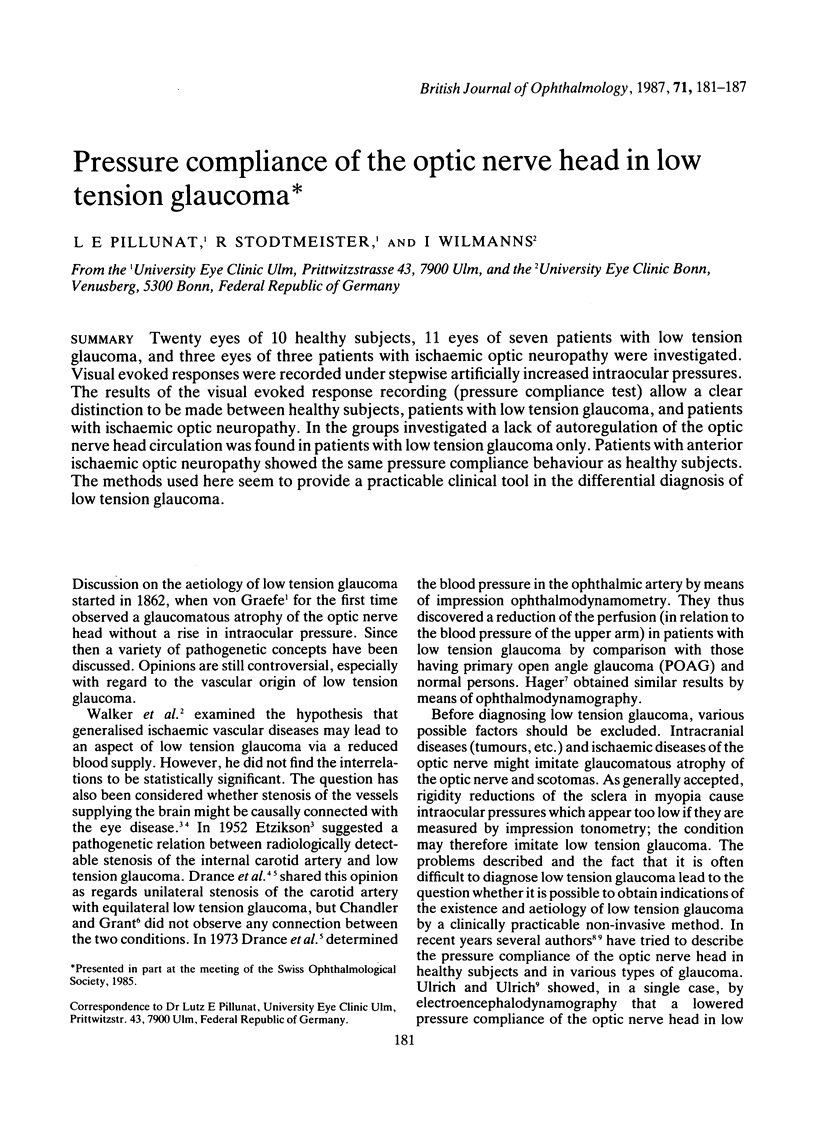
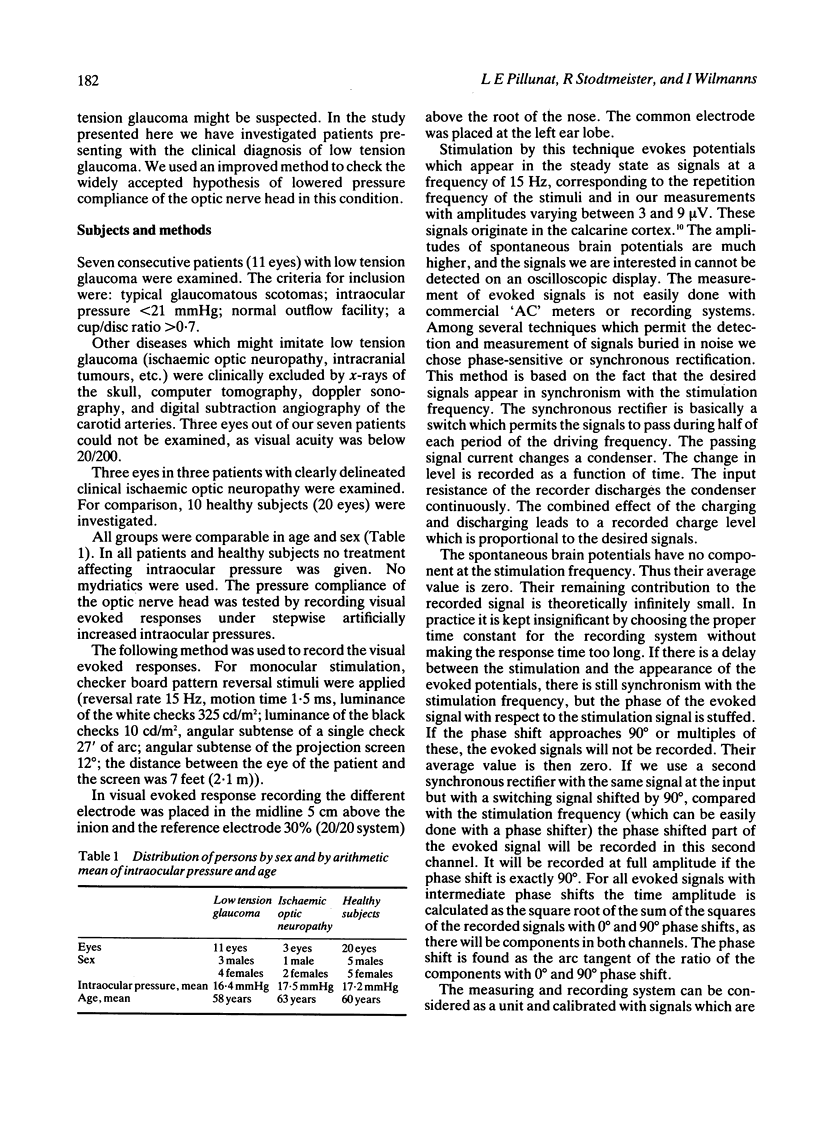
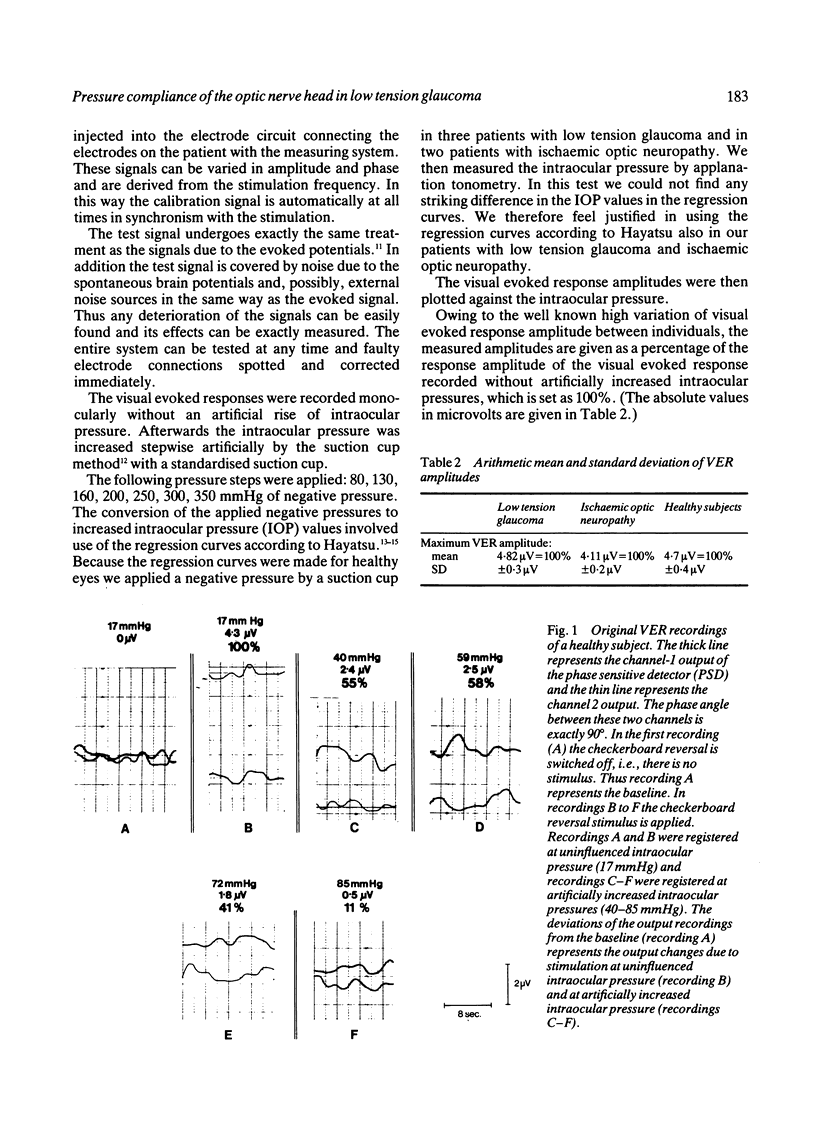
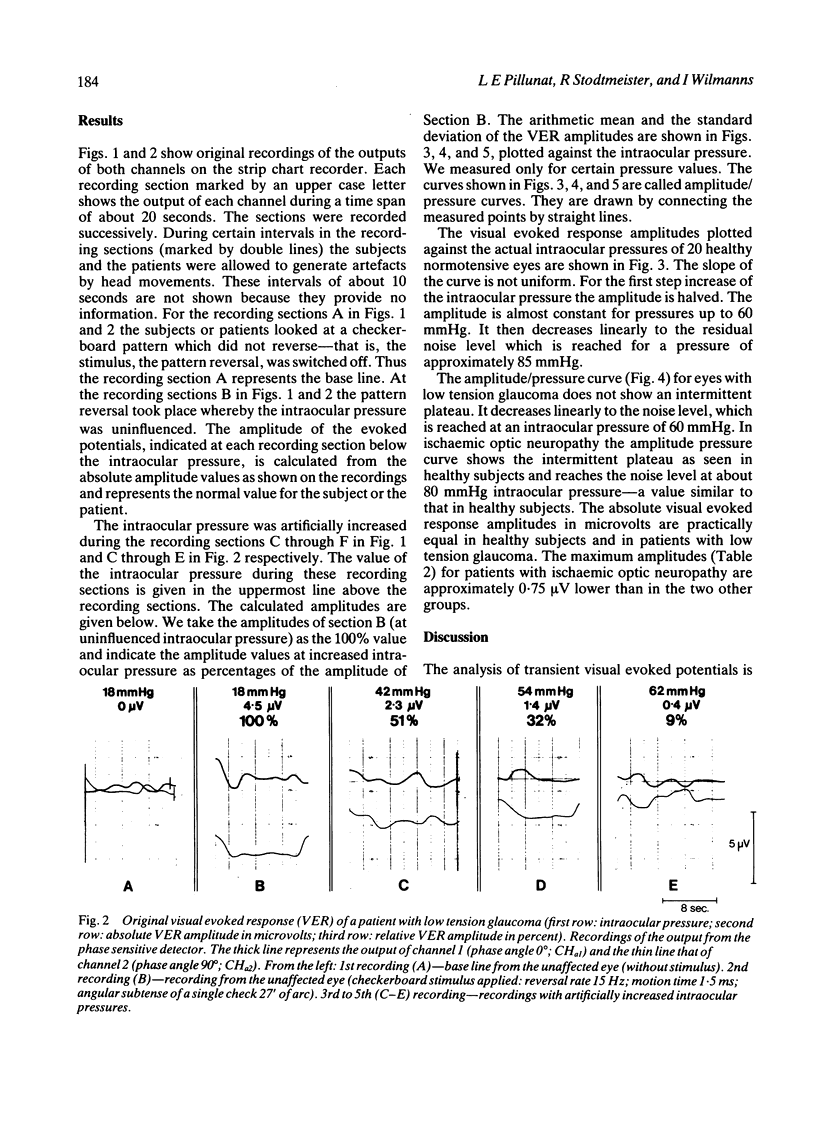
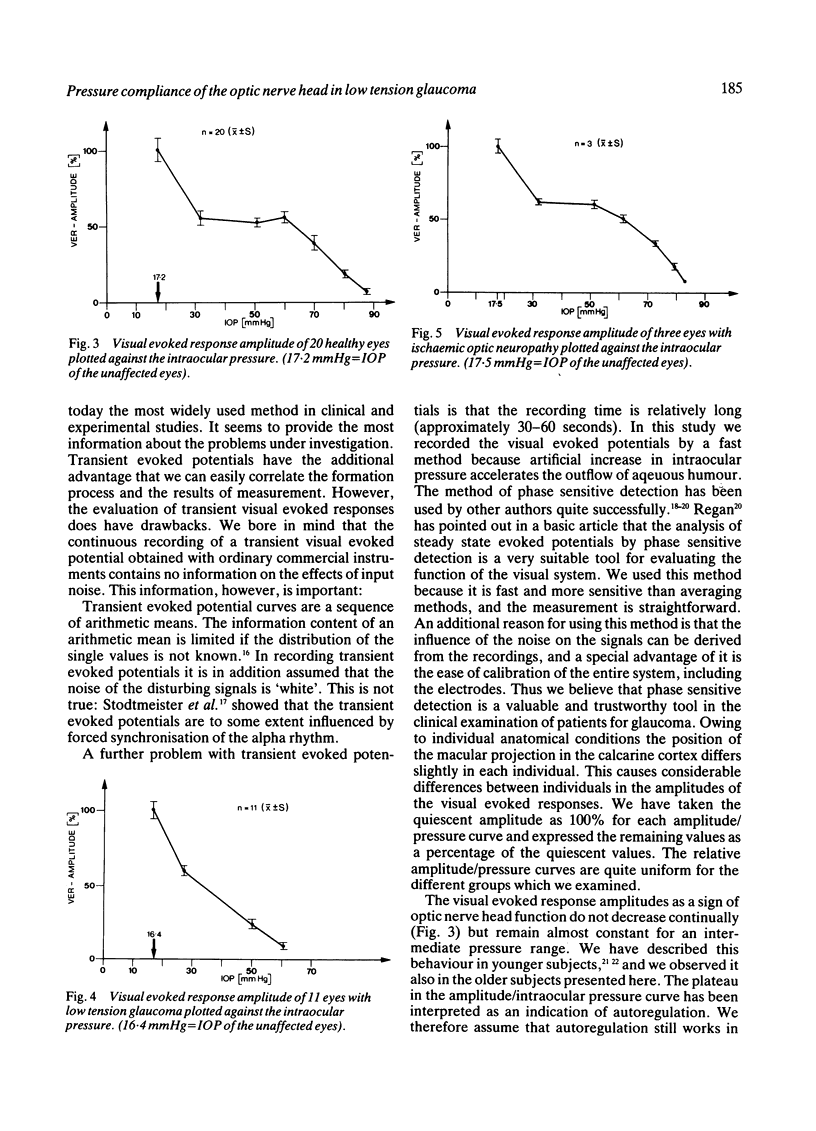
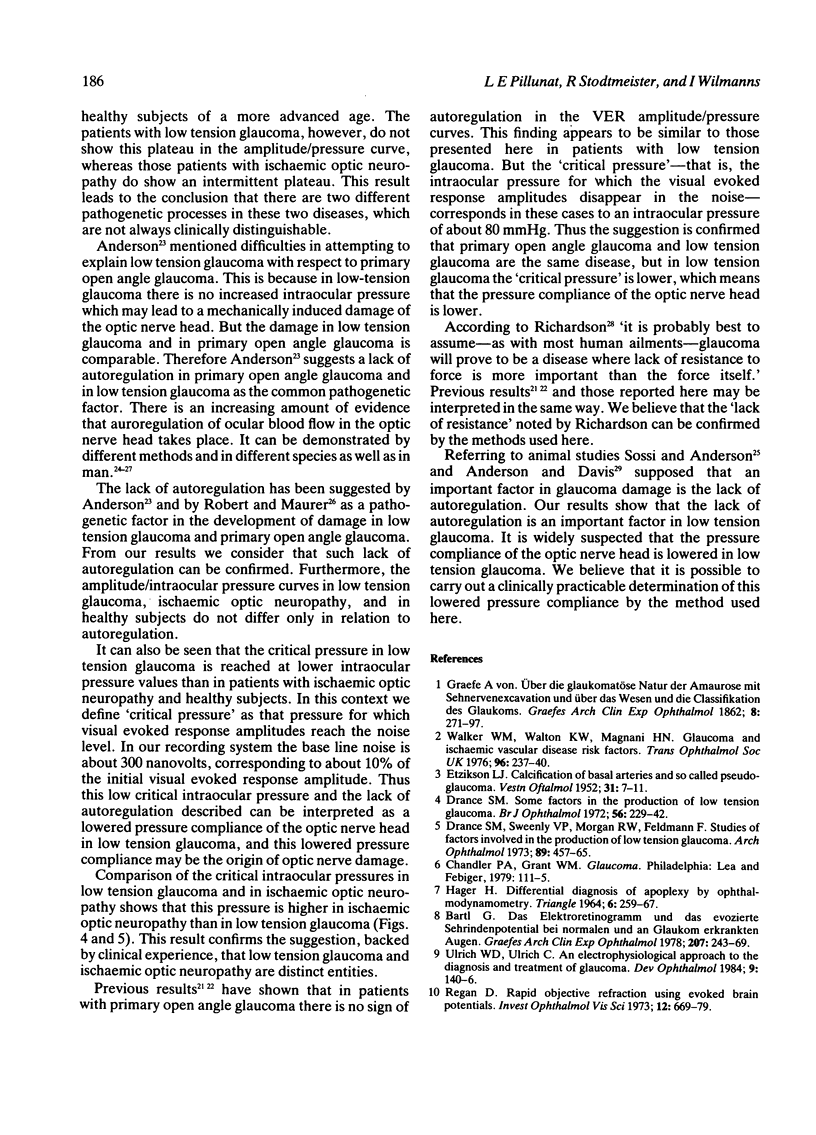
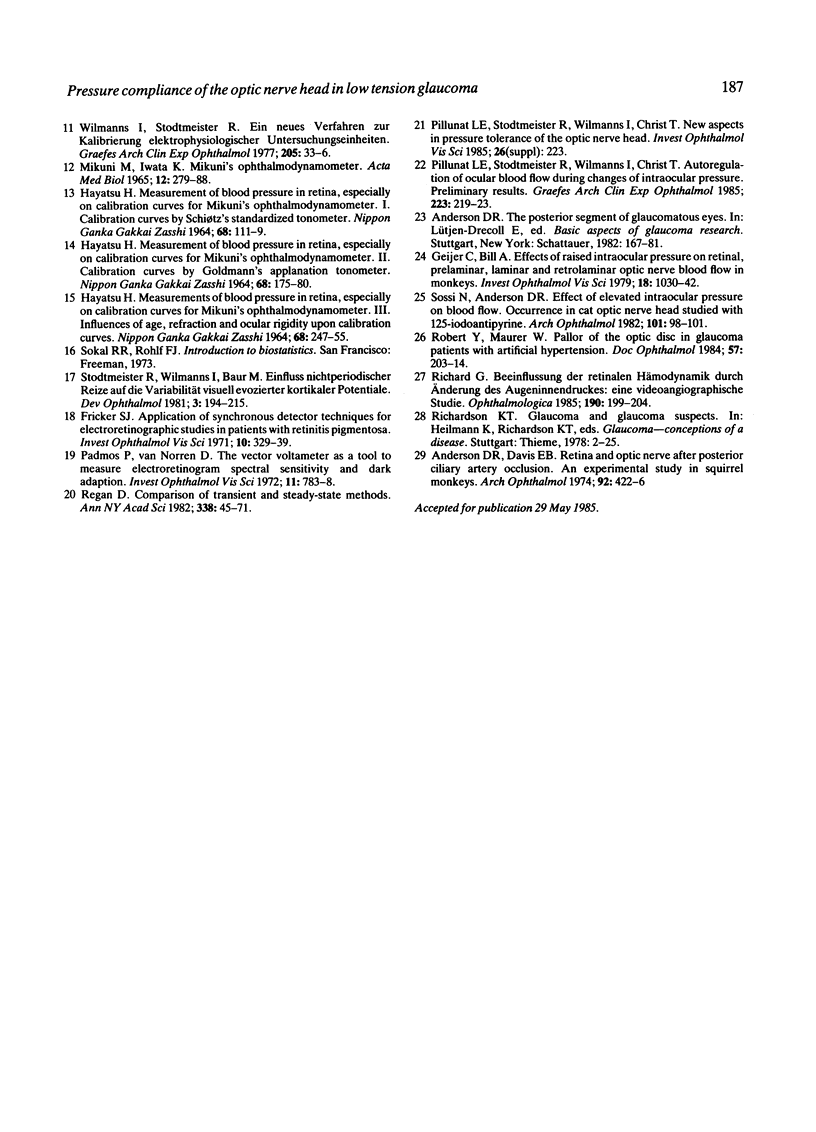
Selected References
These references are in PubMed. This may not be the complete list of references from this article.
- Anderson D. R., Davis E. B. Retina and optic nerve after posterior ciliary artery occlusion. An experimental study in squirrel monkeys. Arch Ophthalmol. 1974 Nov;92(5):422–426. doi: 10.1001/archopht.1974.01010010434013. [DOI] [PubMed] [Google Scholar]
- Bartl G. Das Elektroretinogramm und das evozierte Sehrindenpotential bei normalen und an Glaukom erkrankten Augen. Albrecht Von Graefes Arch Klin Exp Ophthalmol. 1978 Sep 11;207(4):243–269. doi: 10.1007/BF00431163. [DOI] [PubMed] [Google Scholar]
- Drance S. M. Some factors in the production of low tension glaucoma. Br J Ophthalmol. 1972 Mar;56(3):229–242. doi: 10.1136/bjo.56.3.229. [DOI] [PMC free article] [PubMed] [Google Scholar]
- Drance S. M., Sweeney V. P., Morgan R. W., Feldman F. Studies of factors involved in the production of low tension glaucoma. Arch Ophthalmol. 1973 Jun;89(6):457–465. doi: 10.1001/archopht.1973.01000040459003. [DOI] [PubMed] [Google Scholar]
- Fricker S. J. Application of synchronous detector techniques for electroretinographic studies in patients with retinitis pigmentosa. Invest Ophthalmol. 1971 May;10(5):329–339. [PubMed] [Google Scholar]
- Geijer C., Bill A. Effects of raised intraocular pressure on retinal, prelaminar, laminar, and retrolaminar optic nerve blood flow in monkeys. Invest Ophthalmol Vis Sci. 1979 Oct;18(10):1030–1042. [PubMed] [Google Scholar]
- HAGER H. DIFFERENTIAL DIAGNOSIS OF APOPLEXY BY OPHTHALMODYNAMOGRAPHY. Triangle. 1964 Oct;12:259–267. [PubMed] [Google Scholar]
- Hayatsu H. [Measurement of blood pressure in retina, especially in calibration curves for Mikuni's ophthalmodynamometer. II. Calibration curves by Goldmann's applanation tonometer]. Nippon Ganka Gakkai Zasshi. 1964 Mar;68(4):175–180. [PubMed] [Google Scholar]
- Hayatsu H. [Measurement of blood pressure in retina, especially on calibration curves for Mikuni's ophthalmodynamometer. I. Calibration curves by Schiötz's standardized tonometer]. Nippon Ganka Gakkai Zasshi. 1964 Feb;68(2):111–119. [PubMed] [Google Scholar]
- MIKUNI M., IWATA K. MIKUNI'S OPHTHALMODYNAMOMETER. Acta Med Biol (Niigata) 1965 Mar;12:279–288. [PubMed] [Google Scholar]
- Padmos P., Norren D. V. The vector voltmeter as a tool to measure electroretinogram spectral sensitivity and dark adaptation. Invest Ophthalmol. 1972 Sep;11(9):783–788. [PubMed] [Google Scholar]
- Pillunat L. E., Stodtmeister R., Wilmanns I., Christ T. Autoregulation of ocular blood flow during changes in intraocular pressure. Preliminary results. Graefes Arch Clin Exp Ophthalmol. 1985;223(4):219–223. doi: 10.1007/BF02174065. [DOI] [PubMed] [Google Scholar]
- Regan D. Comparison of transient and steady-state methods. Ann N Y Acad Sci. 1982;388:45–71. doi: 10.1111/j.1749-6632.1982.tb50784.x. [DOI] [PubMed] [Google Scholar]
- Regan D. Rapid objective refraction using evoked brain potentials. Invest Ophthalmol. 1973 Sep;12(9):669–679. [PubMed] [Google Scholar]
- Richard G. Beeinflussung der retinalen Hämodynamik durch Anderung des Augeninnendruckes: eine videoangiographische Studie. Ophthalmologica. 1985;190(4):199–204. doi: 10.1159/000309518. [DOI] [PubMed] [Google Scholar]
- Robert Y., Maurer W. Pallor of the optic disc in glaucoma patients with artificial hypertension. Doc Ophthalmol. 1984 May 30;57(3):203–214. doi: 10.1007/BF00143084. [DOI] [PubMed] [Google Scholar]
- Sossi N., Anderson D. R. Effect of elevated intraocular pressure on blood flow. Occurrence in cat optic nerve head studied with iodoantipyrine I 125. Arch Ophthalmol. 1983 Jan;101(1):98–101. doi: 10.1001/archopht.1983.01040010100018. [DOI] [PubMed] [Google Scholar]
- Stodtmeister R., Wilmanns I., Baur M. Einfluss nichtperiodischer Reize auf die Variabilität visuell evozierter kortikaler Potentiale. Dev Ophthalmol. 1981;3:194–215. [PubMed] [Google Scholar]
- Ulrich W. D., Ulrich C. An electrophysiological approach to the diagnosis and treatment of glaucoma. Dev Ophthalmol. 1984;9:140–146. doi: 10.1159/000409817. [DOI] [PubMed] [Google Scholar]
- Walker W. M., Walton K. W., Magnani H. N., Marsters J. B., Ward E. G. Glaucoma and ischaemic vascular disease risk factors. Trans Ophthalmol Soc U K. 1976 Jul;96(2):237–240. [PubMed] [Google Scholar]
- Wilmanns I., Stodtmeister R. Ein neues Verfahren zur Kalibrierung elektrophysiologischer Untersuchungseinheiten. Albrecht Von Graefes Arch Klin Exp Ophthalmol. 1977 Dec 31;205(1):33–39. doi: 10.1007/BF00413461. [DOI] [PubMed] [Google Scholar]


